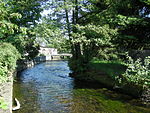The International Space University (ISU) is dedicated to the discovery, research, and development of outer space and its applications for peaceful purposes, through international and multidisciplinary education and research programs. ISU was founded in 1987 and is registered in France and in the US as a non profit organisation. The university offers a one or two-year Master in Space Studies (MSS) in Strasbourg and shorter professional development programs across the world. The latter include an itinerant nine-week Space Studies Program (SSP), a five-week Southern Hemisphere SSP in partnership with the University of South Australia, a 6-week Commercial Space graduate certificate in partnership with the Florida Institute of Technology, and one-week Executive Space Courses in Australia, Europe and the USA.The International Space University Central Campus and global headquarters are located in Illkirch-Graffenstaden near Strasbourg, France. ISU was founded on the "3-Is" philosophy providing an Interdisciplinary, Intercultural, and International environment for educating and training space professionals and post-graduate students. As of April 2020, there were over 5000 ISU alumni from 109 countries. In November 2017 the International Space University hosted a conference in Strasbourg that led to the formation of the Moon Village Association. The ISU faculty members include astronauts, space agency leaders, space engineers, space scientists, managers, and experts in space law and policy comprising an international collection of experts in technical and non-technical space-related fields.The Chancellor of the International Space University is Pascale Ehrenfreund, Chair of the German Aerospace Center (DLR) Executive Board and President of the International Astronautical Federation (IAF). She was preceded by Apollo astronaut Buzz Aldrin, who succeeded then–European Space Agency Director-General Jean-Jacques Dordain and acclaimed science fiction author Arthur C. Clarke, in 2004. The sixth President of the International Space University is Juan de Dalmau who succeeded Prof. Walter Peeters, in September 2018.







